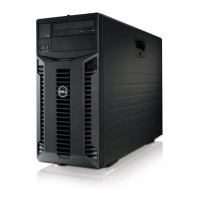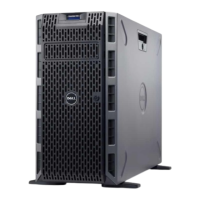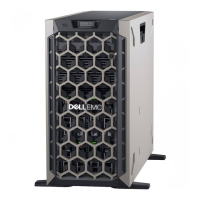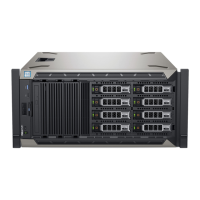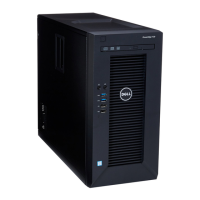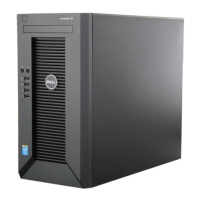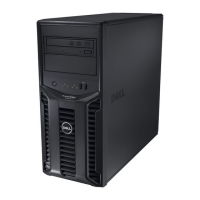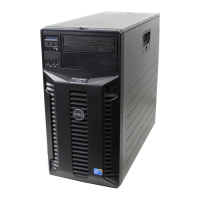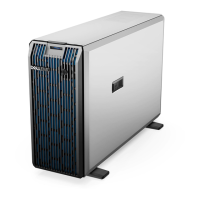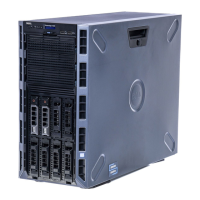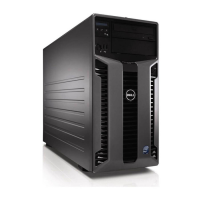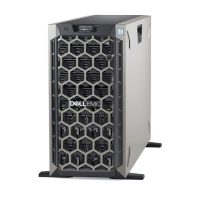110 Installing System Components
1. Requires x4- or x8-based memory modules.
Installing Memory Modules
WARNING: Only trained service technicians are authorized to remove the system
cover and access any of the components inside the system. Before you begin this
procedure, review the safety instructions that came with the system.
WARNING: The memory modules are hot to the touch for some time after the
system has been powered down. Allow time for the memory modules to cool
before handling them. Handle the memory modules by the card edges and avoid
touching the components on the memory module.
CAUTION: To ensure proper system cooling, memory-module blanks must be
installed in any memory socket that is not occupied. Remove memory-module
blanks only if you intend to install memory in those sockets.
1
Turn off the system, including any attached peripherals, and disconnect
the system from the electrical outlet and peripherals.
2
Rotate the system feet inward and lay the system on a flat surface.
Table 3-2. Sample UDIMM Memory Configurations (Per Processor)
Memory
Mode
Memory
Module
Size
Memory
Sockets
Single Processor Dual Processor
4 1 2 3 Physical
Memory
(GB)
Available
Memory
(GB)
Physical
Memory
(GB)
Available
Memory
(GB)
Optimizer 1-GB
X
X
X
X
X
X
X
X
X
X
1
2
3
4
all 2
4
6
8
all
2-GB
X
X
X
X
X
X
X
X
X
X
2
4
6
8
all 4
8
12
16
all
Advanced
ECC
1
1-GB XX 2 all 4 all
2-GB XX 4 all 8 all
Mirroring 1-GB XX 2142
2-GB XX 4284
book.book Page 110 Tuesday, June 9, 2009 4:09 PM
